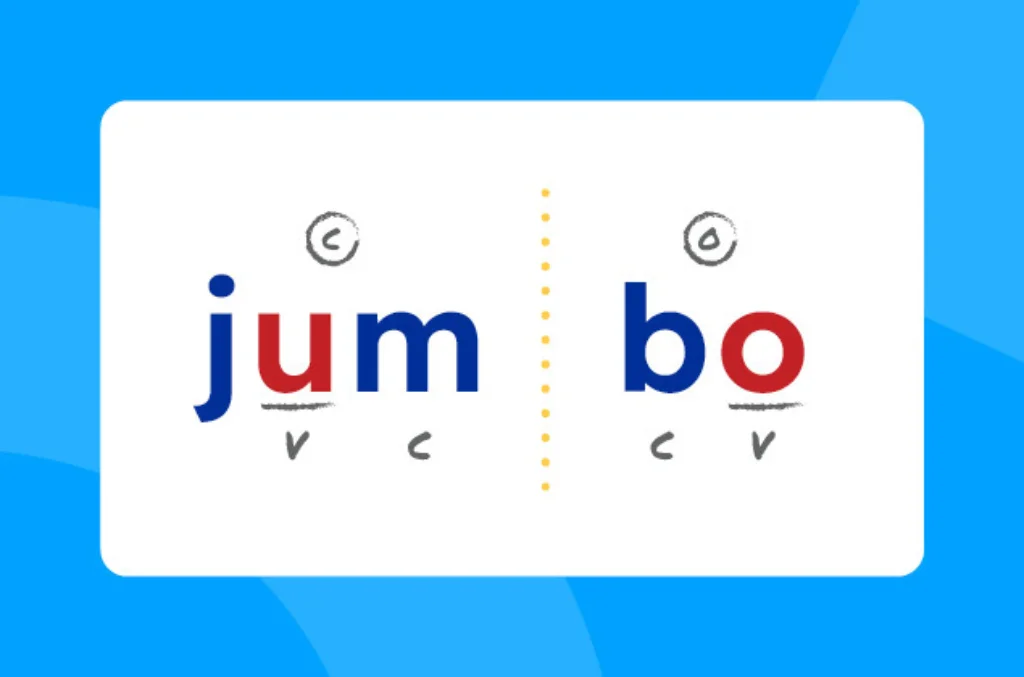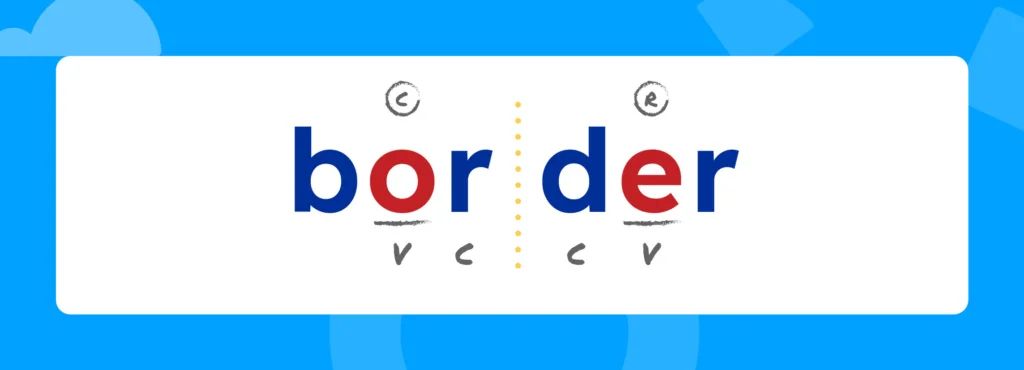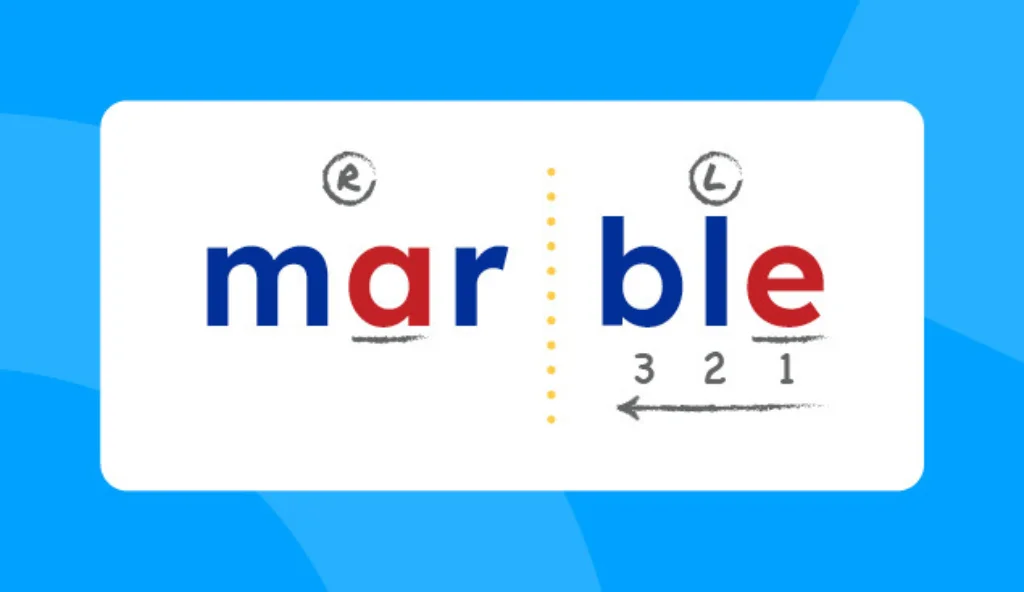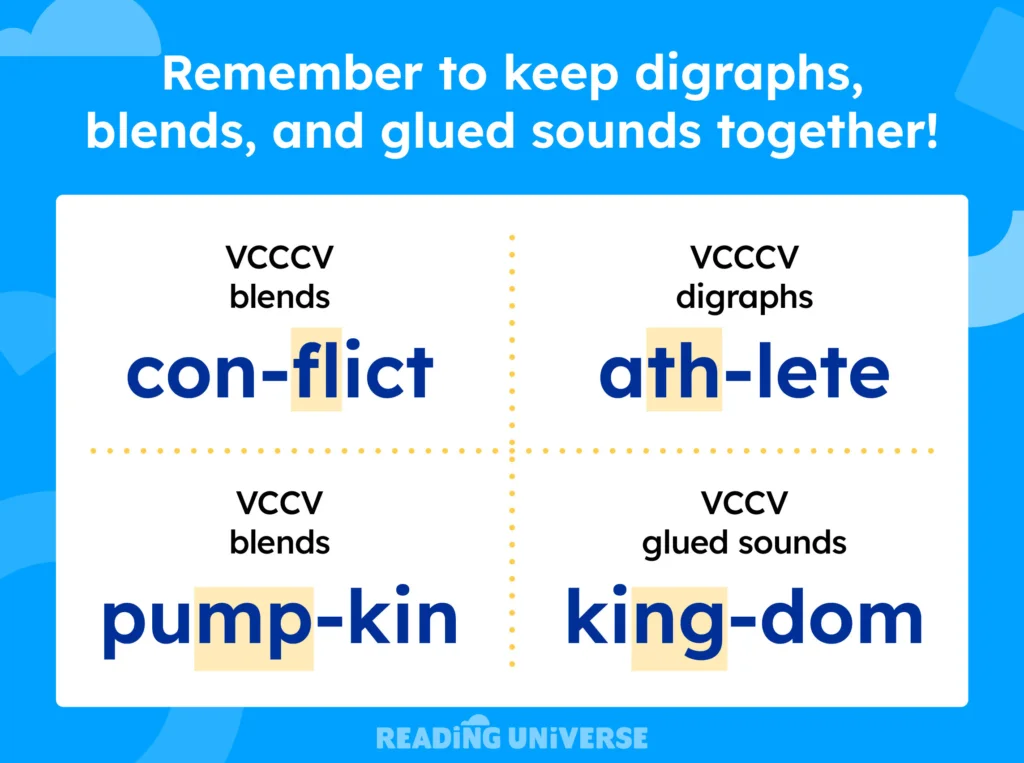3.3 Teach Other Syllable Division Patterns
Multisyllabic Words Skill Explainer

Open Syllables

Magic 'e' Syllables

R-Controlled Vowel Syllables


Teacher Tip
Remember, Word Choice Matters!
It's important to only use multisyllabic words with syllable types that students have already learned. For example, we would not want to use a word like harvest if students have only been taught closed syllables. To decode this word, they need to know r-controlled vowels, too: har- is an r-controlled syllable. Students may be able to determine where to divide the syllables, but reading the word would still be difficult because they have not learned the /ar/ in har-.
Remember, Word Choice Matters!
It's important to only use multisyllabic words with syllable types that students have already learned. For example, we would not want to use a word like harvest if students have only been taught closed syllables. To decode this word, they need to know r-controlled vowels, too: har- is an r-controlled syllable. Students may be able to determine where to divide the syllables, but reading the word would still be difficult because they have not learned the /ar/ in har-.
Consonant '-le' Syllables

The consonant '-le' syllable is typically the last of the six syllable types that you'll teach. It appears only in multisyllabic words and makes its own syllable. This syllable is made up of a consonant followed by '-le', like in table, purple, and marble. Even though the final syllable does not contain a traditional vowel sound, the '-le' pattern is the sign that the last three letters stand as their own syllable (like '-ble' in table).
To divide a word with the consonant '-le' pattern, we teach students to start at the 'e', count back three letters from the end of the word, and then divide the word into syllables. For example, in marble: count back three letters from the 'e' and divide between the 'r' and 'b', mar-ble.
VCCCV Pattern with Closed Syllables

VCV Pattern

How to Divide Multisyllabic Words: VCV
Watch teacher Erin Russo explain how to break up the two-syllable words student and finish to make them easier to read.

Hide Video Transcript
Show Video Transcript
Erin Russo: We've also learned how to read two syllable words that only have one consonant between the two vowels. Can someone remind me how to use strategies to read this two syllable word? Josie?
Josie: You underline the 'u' and the 'e'.
Erin Russo: Right. And what do we see between the 'u' and the 'e', Josie?
Josie: The 'd'.
Erin Russo: The 'd'. Ooh. So where's the first place we should try dividing?
Josie: Between that 'd' and the 'e'.
Erin Russo: Well, that's actually the second place. First, before we divide after the consonant, Josie, we want to try dividing before the consonant. Let's try that. So if I'm going to divide before the consonant, where am I going to divide?
Josie: Between the 'u and the 't'.
Erin Russo: You got it. Josie, can you help us read this word?s
Josie: Student.
Erin Russo: Student. Next we're going to read another two syllable word that has one consonant between the two vowels. Who would like to tell us how to use strategies to read this two syllable word? Blake?
Blake: You underline the 'i' and the 'i'.
Erin Russo: So both 'i's. And what do we see?
Blake: One consonant between.
Erin Russo: So Blake, usually we would divide before the consonant, but if I divide there, this would say fineish. Is fineish a word?
Blake: No.
Erin Russo: No. So where do we have to divide, Blake?
Blake: After the 's'.
Erin Russo: Right. So sometimes with these words we know we have to divide after the consonant. If it doesn't work when we divide before the consonant. So Blake, now we can read this word accurately. What is this word?
Blake: Finish.
Erin Russo: Finish.

Building Vocabulary
What if my student has never encountered this word before? VCV syllable division can be challenging for English Learners or students who are still building their vocabulary. If you have students who aren't familiar with the word, tell them what the word is or use scaffolds to help them figure out where to divide the word.
You might say, "Try dividing the word after the first vowel," or "Try dividing the word so that the first syllable is closed."
After the student reads the word, provide the meaning and use it in context to support vocabulary development and comprehension.
What if my student has never encountered this word before? VCV syllable division can be challenging for English Learners or students who are still building their vocabulary. If you have students who aren't familiar with the word, tell them what the word is or use scaffolds to help them figure out where to divide the word.
You might say, "Try dividing the word after the first vowel," or "Try dividing the word so that the first syllable is closed."
After the student reads the word, provide the meaning and use it in context to support vocabulary development and comprehension.
Schwa
VV Pattern

We can also teach students how to divide multisyllabic words that follow the VV pattern (vowel-vowel). This pattern can be tricky because students need a solid understanding of vowel teams and diphthongs first. For example, the words food, foil, and read have vowel teams, so they would not be divided because they are one-syllable words.
When there is a multisyllabic word with the VV pattern, the syllable break comes between the vowels. For example, in diet, lion, and chaos, we divide between the two vowels. You may need to explicitly teach them to divide between the vowels so they can decode and read the word correctly. However, this is the least frequent syllable division pattern, so it does not need the same amount of instructional time as previous patterns, and many readers are able to learn words like sci-ence and po-em through their exposure to content areas.
Prefixes and Suffixes


Putting It All Together
Syllable Division Rules Poster
| Pattern | Where Should I Divide the Word? | Example |
|---|---|---|
| VCCV | When two consonants are between two vowels, divide between the consonants. | shel-ter |
| VCCCV | When three or more consonants are between two vowels, keep the digraphs and blends together. | hun-dred |
| VCV | When one consonant is between two vowels, first divide after the first vowel and sound out the syllables. If that does not make a recognizable word, divide after the consonant. | ro-bot, cab-in |
| Consonant '-le' | Count back three letters from the 'e' and divide. | can-dle |
| VV | When two vowels are together (and each has its own sound — they are not a vowel team or diphthong), divide between the vowels. | ne-on, li-on |
| Prefixes and Suffixes | Look for the base word. Separate the prefix and/or suffix from the base word. Now, decide if the base word needs to be divided. | un-load-ed |
